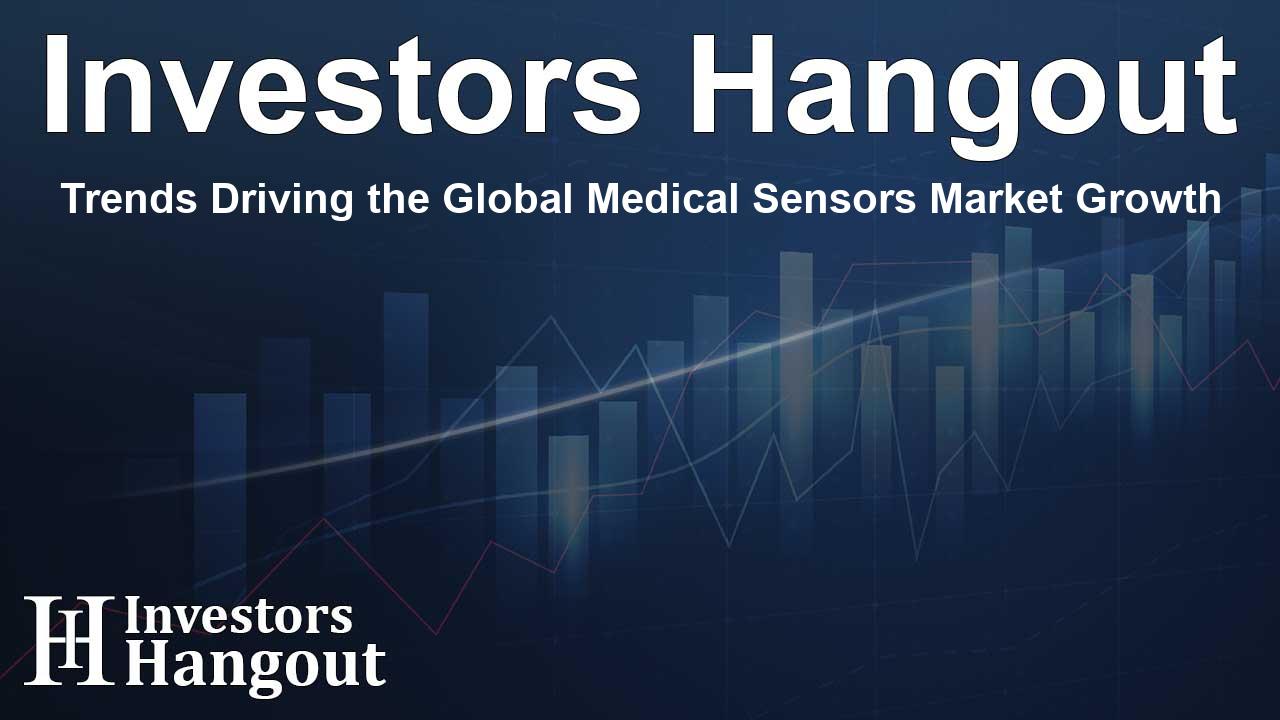Trends Driving the Global Medical Sensors Market Growth

The Future of the Medical Sensors Market
The global medical sensors market is on the verge of remarkable growth, with projections indicating a valuation of USD 142.2 billion by 2030. The increasing elderly population is a major factor influencing this growth, as age elevates the susceptibility to chronic diseases such as diabetes, heart ailments, and neurodegenerative disorders. Medical sensors are vital for enabling continuous monitoring and facilitating timely diagnostics, thereby enhancing personalized medical care for individuals dealing with health challenges.
Market Trends and Opportunities
Recent reports indicate that the medical sensors market is expanding at a compound annual growth rate (CAGR) of 19.1%. This robust growth stems from various applications, product developments, end-use cases, and geographical expansions that are emerging across the globe. The healthcare industry is shifting toward more comfortable and user-friendly solutions. Innovations like non-invasive and contactless sensing technologies are transforming the market landscape.
Innovations in Medical Sensing Technologies
The rise of wearable medical devices has significantly altered personal health management. Fitness trackers and smartwatches are at the forefront of this change, providing real-time health monitoring outside traditional hospital settings. Equipped with advanced sensors, these devices track vital signs like heart rates and blood oxygen levels, while also measuring temperature, sleep patterns, and even stress levels. Such technologies empower users with critical health insights and improve the management of chronic conditions.
Artificial Intelligence and IoT Integration
The advancement of the healthcare sector increasingly relies on the integration between medical sensors, Artificial Intelligence (AI), and the Internet of Things (IoT). This convergence enables a transition from reactive to proactive healthcare approaches. Wearable devices equipped with smart sensors continuously collect and transmit health data through IoT networks. AI analyzes this collected data to identify early warning signs of chronic diseases, facilitating faster clinical decisions and enhancing remote patient care.
Growth of Biosensors
Biosensors are playing a pivotal role in advancing personalized healthcare, particularly in diabetes management and fertility tracking. Systems like Continuous Glucose Monitoring (CGM) assist diabetic patients by providing real-time glucose levels, while biosensors that monitor hormonal fluctuations offer insights into fertility cycles. These innovations contribute to an expansive medical sensors market by offering individuals tailored health data.
Geographical Insights and Dynamics
The North America region currently dominates the medical sensors market, amplified by its robust healthcare infrastructure and significant investments in research and development. The United States leads in integrating medical sensors with devices for remote patient monitoring and wearable technologies. Meanwhile, Europe is concentrating its efforts on telemedicine and home-based healthcare solutions, fueled by government initiatives. In the Asia Pacific sector, countries like China, India, Japan, and South Korea are witnessing rapid growth, driven by improved healthcare infrastructure and increasing digital health awareness.
Market Segmentation
- The medical sensors market is categorized into surgical, diagnostics, therapeutics, and monitoring applications, with the surgical segment capturing the largest share.
- In terms of product types, segments include pressure sensors, temperature sensors, image sensors, accelerometers, and biosensors, with the biosensors segment anticipated to dominate the market.
- End-use classification includes hospitals, clinics, nursing homes, and home healthcare, with hospitals holding the largest market share.
Competitive Landscape
The medical sensors market features competitive dynamics, with major players employing strategies like product launches and strategic partnerships to stabilize their market positions. Companies such as Analog Devices Inc., Avago Technologies Ltd., Danaher Corporation, GE Healthcare, and Honeywell International Inc. stand out as key innovators driving advancements.
Recent Developments in the Industry
- In a recent development, one major player expanded its medical device testing facility, aimed at enhancing product innovation and quality assurance.
- Collaborations between leading companies aim to improve healthcare delivery by providing innovative care-at-home solutions, showcasing the industry’s focus on continuity of care.
- Newly introduced technologies, including specialized cable modules for elective surgeries, illustrate the industry's strides towards enhancing procedural capabilities.
The Path Ahead
The medical sensors market is positioned for substantial growth as it adapts to rapidly evolving technologies. As the healthcare landscape continues to embrace digital innovations, the focus will shift towards enhancing the functionality of medical sensors through AI, IoT, and advanced data analytics. This transformation is paving the way for unprecedented advancements in patient care, enabling healthcare systems to better cater to the needs of an aging population and those with chronic conditions.
Frequently Asked Questions
What is the expected growth rate of the medical sensors market?
The medical sensors market is expected to grow at a CAGR of 19.1% from 2024 to 2030.
What applications are driving the medical sensors market?
Key applications include diagnostics, monitoring, and therapeutic uses, particularly in surgical settings.
What innovations are influencing the market?
Technological advancements such as AI integration, wearable health monitoring devices, and biosensors are driving growth.
Which region leads the medical sensors market?
North America currently leads the market due to its robust healthcare infrastructure and early technology adoption.
Who are the key players in the medical sensors market?
Major players include Analog Devices Inc., GE Healthcare, Honeywell International Inc., and Danaher Corporation, among others.
About The Author
Contact Dylan Bailey privately here. Or send an email with ATTN: Dylan Bailey as the subject to contact@investorshangout.com.
About Investors Hangout
Investors Hangout is a leading online stock forum for financial discussion and learning, offering a wide range of free tools and resources. It draws in traders of all levels, who exchange market knowledge, investigate trading tactics, and keep an eye on industry developments in real time. Featuring financial articles, stock message boards, quotes, charts, company profiles, and live news updates. Through cooperative learning and a wealth of informational resources, it helps users from novices creating their first portfolios to experts honing their techniques. Join Investors Hangout today: https://investorshangout.com/
The content of this article is based on factual, publicly available information and does not represent legal, financial, or investment advice. Investors Hangout does not offer financial advice, and the author is not a licensed financial advisor. Consult a qualified advisor before making any financial or investment decisions based on this article. This article should not be considered advice to purchase, sell, or hold any securities or other investments. If any of the material provided here is inaccurate, please contact us for corrections.
